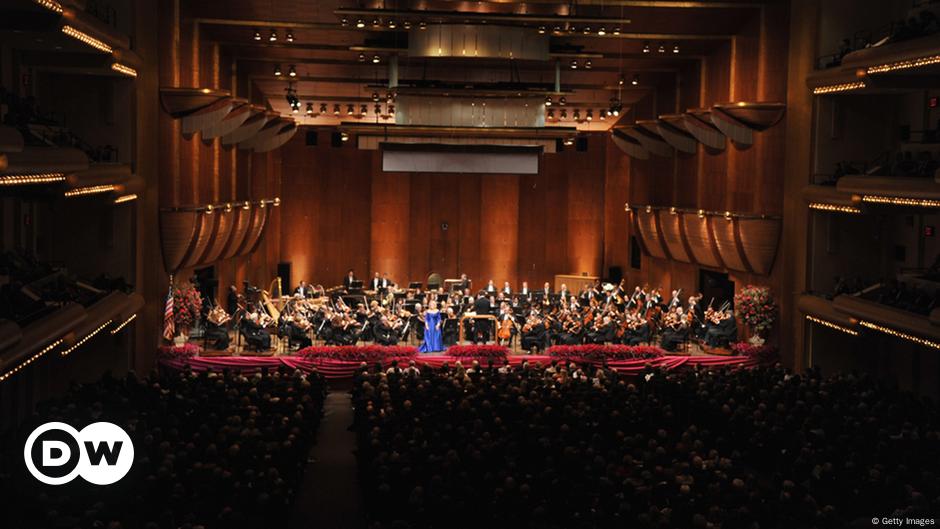Almost 2,000 sound recordings – and 13,000 performances by 1999: These are numbers that no other orchestra in the world can match. By contrast, a less positive statistic: The number of Philharmonic subscriptions has been falling for years. Your budget deficit in 2016 was 2.1 million US dollars (around 1.98 million euros). To make matters worse, the orchestra will also be homeless from 2019: The David Geffen (formerly Avery Fisher) Hall in New York’s Lincoln Center (pictured above) is being renovated. And it is precisely during this time that a new chief conductor has to assert himself. The position of managing director also has to be filled.
Orchestra: “Minefield for Conductors”
The New York Philharmonic Orchestra has experienced serious turning points, but also created music history. This story began on December 7, 1842, when 63 instrumentalists of the “Philharmonic Society of New York” played for around 600 visitors in the “Apollo Rooms” on Broadway.
Ureli Corelli Hill knew he had started a true American institution
–
Ureli Corelli Hill, the founder of the ensemble, conducted the musicians in Ludwig van Beethoven’s Fifth Symphony. A music lover who was there described the performance as “completely drilled”, a concert almost in military perfection. And that although the musicians came from different countries and musical traditions.
The orchestra’s chief conductors include renowned names such as Gustav Mahler, Arturo Toscanini, Leonard Bernstein, Pierre Boulez and Zubin Mehta. Three of them – Mahler, Toscanini and Bernstein – also had longstanding ties to the great antipode of the New York Philharmonic: the Vienna Philharmonic.
The conductors of the New York Philharmonic stood before an unusually self-confident, often irritable collective of musicians that was considered a “minefield for conductors”. Under the self-confident Maestro Toscanini, after his inauguration in 1928, all string players even had to take the entrance exams again.
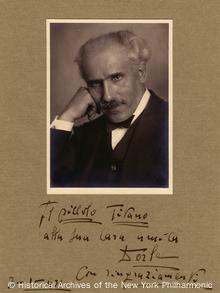
Arturo Toscanini belonged to the species “dictator at the desk”
–
These instrumentalists have been accused of many things over the years, but never of being easily intimidated. Critics have repeatedly mentioned the orchestra’s “tinny exaggerations” – a quality that even a Kurt Masur could not completely erase. Before the German reunification hero could introduce discipline and order into the ranks of musicians, he was in discussion as a candidate for the presidency in Germany. “You certainly have no illusions about which job will be more difficult,” his fellow conductor Simon Rattle is said to have said to him. More difficult – Rattle didn’t mean the president’s duties.
Inextinguishable moments: concert in memory of September 11th
Kurt Masur succeeded Zubin Mehta, the longest serving music director of the New York Philharmonic (1978-1991). With his Kapellmeister qualities and German musical virtues, Masur served as music director from 1991 to 2002, completely renewed the orchestra and significantly improved the sound. A moment unforgettable by New Yorkers was Masur’s conducting at the “German Requiem” by Johannes Brahms in memory of the victims of the terrorist attack of September 11, 2001.
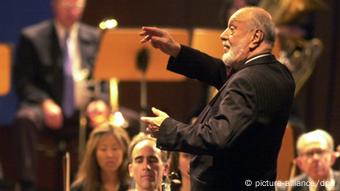
The German conductor Masur restored the morale of the orchestra
–
In various trauma in US history, the musicians encountered the feeling of the times: from the Great Depression of the 30s to the AIDS epidemic of the 80s and Hurricane Katrina in 2005. They gave consolation after the attacks on two presidents: Abraham Lincoln died in 1865 and John F. Kennedy in 1963.
The latter memorial concert was conducted by a man who was a welcome guest at the White House: Leonard Bernstein. Without a doubt, “Lenny” was the most popular of the New York Philharmonic’s chief conductors. When he stood in for the sick Bruno Walter on November 14, 1943, he conducted a concert that went down in history as legendary.
No conductor has been loved by the audience – even the television audience. Bernstein moderated the broadcasts of the “Young People’s Concerts” with gusto. However, he had not justified it; the tradition went back to 1924.
It was also Lenny who led the orchestra at an unforgettable moment in Germany: a performance of Beethoven’s Ninth Symphony at Berlin’s Gendarmenmarkt at Christmas 1989 – one month after the fall of the Berlin Wall. In the final chorus “To Joy” the conductor exchanged the word “joy” for “freedom”. The purists were offended, the people deeply moved.
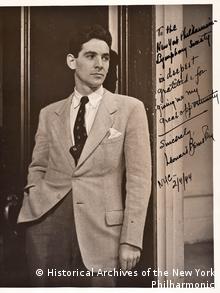
Lenny in 1943: the beginning of a whiz kid – and a love story
–
Special challenges for Jaap van Zweden
Bernstein, chief conductor from 1958 to 1969, was considered a visionary – like his successor Pierre Boulez – and also the current orchestra director Alan Gilbert, who garnished his concerts with plenty of modern music and founded the “New York Philharmonic Biennial”, a festival of contemporary music.
Gilbert will be replaced by Jaap van Zweden in 2018. As the 26th Music Director of the New York Philharmonic, the Dutchman has a particular challenge: he has to motivate members and mobilize the audience while the orchestra’s home remains closed.
Before that, the New Yorkers will appear abroad again: On March 23, a new European tour will begin, which will build on a rich tradition. A milestone in history was the tour in 1958: in the middle of the Cold War, the orchestra played acclaimed performances in the Soviet Union. An even bigger sensation was the warm reception the audience in Pyongyang, North Korea gave the Philharmonic in 2008. In total, they have performed in 432 cities in 62 countries on five continents.
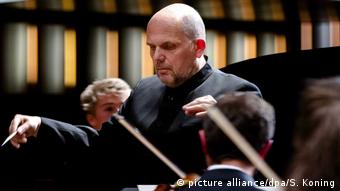
Jaap van Zweden will have to lead the orchestra through uncertain times
–
A double anniversary
The New York Philharmonic Orchestra has meticulously documented every performance since the memorable first concert on December 7, 1842. Those interested can read his story online on 170,000 pages.
Look it up there too: The New York Philharmonic Orchestra’s first sound recording was on January 20, 1917. To celebrate this milestone anniversary, a 65-part CD series is being released on the “Sony Classical” label. Later in the year, the orchestra begins a retrospective of Leonard Bernstein’s music – in the run-up to his 100th birthday on August 25, 2018.
There is also an exhibition to mark the orchestra’s 175th anniversary: It was opened on February 23 at the “Austrian Cultural Forum” in New York. Why there? It is a joint exhibition in collaboration with the Vienna Philharmonic. Because this large orchestra will also be 175 years old this year.
– .
